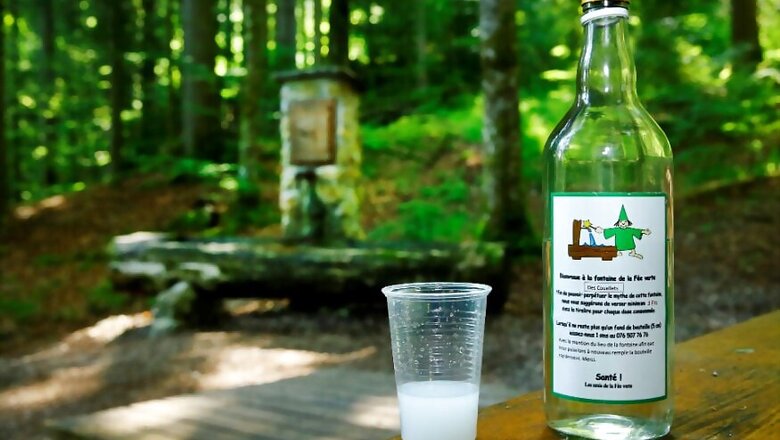
views
 What is the colour green to you? Towards the fag end of the 19th century, green meant fairy, a fairy but from whose fangs dripped dark blood which she had drawn from thousands of people who fell slave to her voodoo.
What is the colour green to you? Towards the fag end of the 19th century, green meant fairy, a fairy but from whose fangs dripped dark blood which she had drawn from thousands of people who fell slave to her voodoo.
The green fairy, as the spirit absinthe was popularly known in Europe, went like rage not only among the intellectual circuits in Paris and elsewhere where artists and poets found their muse with her help, but it was also making steady inroads to poor families in cities, suburbs an even into remote villages.
Absinthe is an anise-flavoured spirit made from botanicals, the chief among them include the flowers and leaves of wormwood. Originated in Switzerland in the 18th century, it caught the public fancy in late 19th and early 20th century with the Parisian artists and intellectuals warming themselves to the green lure (absinthe is green in colour. Well, some are colourless). Ernest Hemingway, James Joyce, Paul Verlaine, Rimbaud, Picasso, Vincent Van Gogh... the beeline of its ardent admirers is too long for us to measure.
But even as the craving for the drink grew, there were also attempts in the society to stem the devil aka the fairy. Temperance movements, in their fight against alcohol, saw in absinthe their arch enemy. They thought absinthe induced madness in the drinkers. At one point they were even ready to let every other spirit slip away from their hit list, in order to muster all their forces to get this one elusive fairy under the guillotine. They pressurised politicians by staging protest marches, assemblies and conventions. Kill the green fairy! Ban it! They cried in vain.
But the authorities would not do anything without a solid incident that linked absinthe with madness or evil. They needed proof.
Meanwhile, one August morning in Switzerland, Jean Lanfray, a French labourer, asked his wife to wax his boots before he went out for work. When he came back, there lay on the same place his boots, unpolished! His eyes narrowed and he drew a long breath, before storming to his closet to pick his army rifle. When he put the bullet on his wife’s face, she was carrying a four-month foetus in her womb.
Lanfray’s daughter Rose heard the noise and ran in to check what had come over her pregnant mother. There she saw her father standing with the rifle which was now pointed at her. She got the bullet on her chest. Lanfray then walked towards the crib where his two-year old daughter was sleeping with a smile on her face. At the end of the carnage he pointed the end of the barrel and pulled the trigger. He was too close to it to get it right this time. He could only injure himself.
“Un absinthiste (He drinks absinthe)!” screamed every newspaper in Europe. It was found that Lanfray had poured himself two pegs of absinthe before he ordered his wife to wax his boots. Finally, the temperance movements could corner their greatest enemy. Though Lanfray drank other drinks on that day, they were all swept under the carpet by the newspapers. Ban absinthe!
It was Switzerland which first voted the green fairy out of its land. Other European countries followed.
(Manu Remakant is a freelance writer who also runs a video blog - A Cup of Kavitha - introducing world poetry to Malayalees. Views expressed here are personal)
















Comments
0 comment